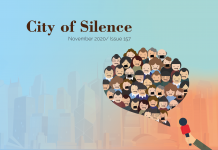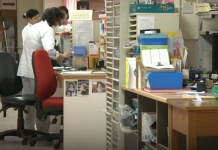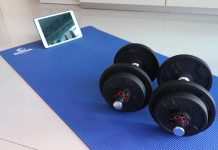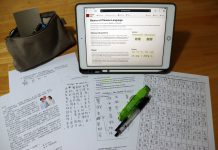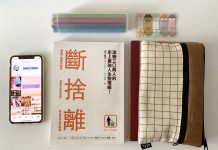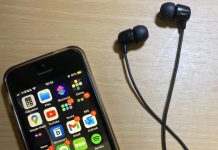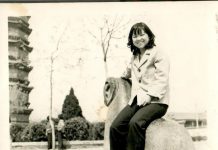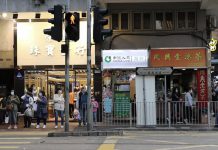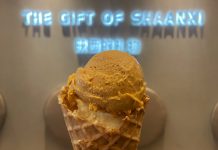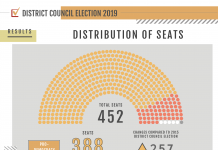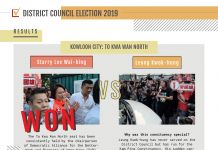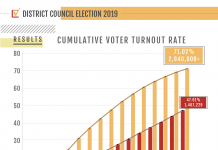No typhoon too terrible for Hong Kong’s storm hunters
By Grace Cheung
It was around 11:00 p.m. on 15 September 2014 and the T8 tropical cyclone signal had been issued for half an hour. Thick, dense clouds gathered in the sky and the raging wind was howling. Suddenly, a deafening bang split the air and tree branches collapsed under the gale. Instead of taking shelter at home, three youngsters in raincoats trudged uphill on a path strewn with fallen branches in the driving rain and then walked up to the roof of an eight-storey building facing Tolo Harbour. They held up their anemometers to measure the wind speed of Typhoon Kalmaegi, which had left chaos and destruction in the Philippines, and was now passing over Hong Kong.
Every summer, from July to September, Hong Kong’s meteorology enthusiasts pursue one of their most popular activities – wind chasing. They gather in the most exposed and wind-stricken areas to experience the power of the typhoons that visit this humid, sub-tropical city with four fairly distinct seasons and a temperate climate.
But tropical cyclones, while particularly fascinating to nearly all Hong Kong’s weather geeks, is just one of the aspects of their hobby. In general, meteorology is the science of the weather, or the study of the weather phenomena within the Earth’s atmosphere.
Calvin Yu cheuk-hei, a second year university student, was one of the young wind chasers experiencing Typhoon Kalmaegi on the Sha Tin rooftop that day. He has been a key committee member of the Hong Kong Meteorological Communication Centre – a group of amateur weather enthusiasts – for five years. Yu points out the differences between meteorology and astronomy, two disciplines that many Hongkongers tend to mix-up. “Phenomena that occur out of the atmosphere and are related to other planets fall under astronomy, such as solar eclipses and lunar eclipses,” he says.
Yu says the misconception is partially caused by the fact that the Hong Kong Observatory (HKO) is the official department for disseminating information concerning both meteorology and astronomy. “The Chinese name of Hong Kong Observatory implies ‘astronomy’, and the HKO is also responsible for reporting the times for eclipses and meteor showers,” he says.
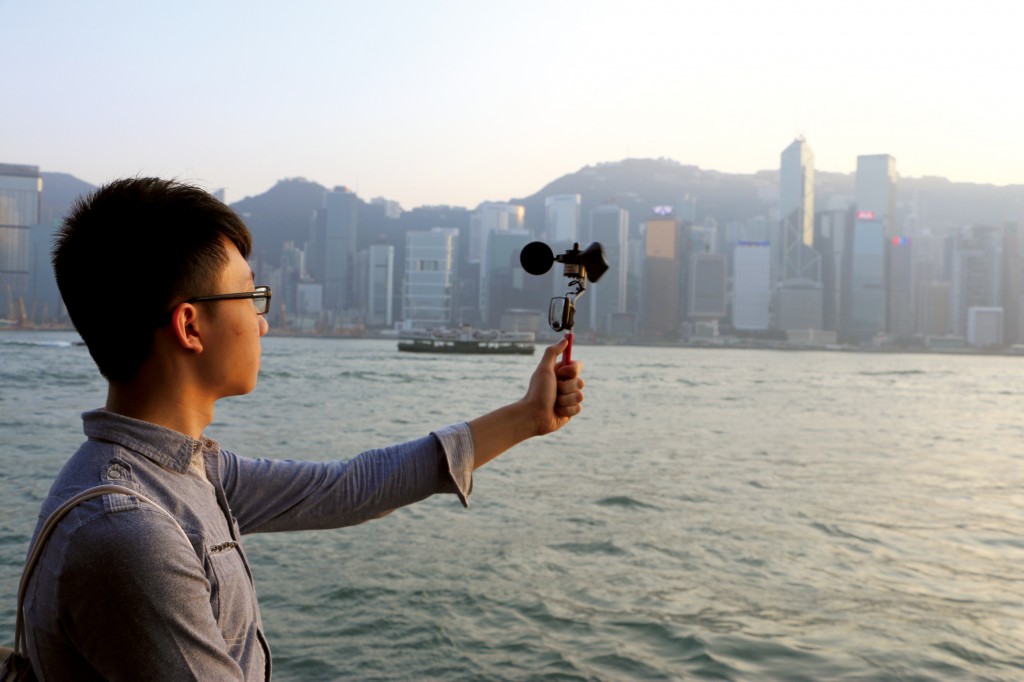
While meterology is a mystery to most ordinary Hongkongers, it has been a lifelong passion for 43-year-old Clarence Fong Chi-kong. Fong launched the website Weather Underground of Hong Kong in June 1995, even before the HKO had a website.
The website is now the city’s most influential unofficial educational platform for sharing information about meteorology. It regularly publishes the latest weather charts, data and satellite maps.
When Fong first started it, he simply shared the statistics and graphs collected from other foreign sources online. “Before the launch of my online data base, HKO hadn’t published any of its weather statistics to the general public,” he says.
Since the launch of the HKO website in 1996, Fong’s site has run alongside it and he now writes blogs on the website to explain weather phenomena in a way laymen can understand. He has also started a Facebook page for Weather Underground of Hong Kong as an instant sharing platform.
Fong once worked at the HKO, joining as experimental officer in 1993, but he was disappointed the job was not a purely scientific one. As he had studied programming at university and had not studied physics at school or in college, he could not become a scientific officer. Besides, what he really enjoyed was conducting his research without any constraints. “I like to see the changes of weather and forecast them. Whether they’re accurate or not is just my business and I don’t need to explain to others…or give them any warning,” he says. So he left the HKO in 1995 and is now working as a web developer.
Fong first got into meteorology because he was fascinated with typhoons. He reminisces about his childhood days when the HKO physically hoisted typhoon signals onto selected towers on high ground. “These metal signals weighed over 40-50 pounds,” he says. “I would raise 3-D typhoon signals made of cardboard at home, and asked my parents to look.”
By the time he was at secondary school, Fong was already writing computer programs for entering tropical cyclone statistics and plotting typhoon tracks using real-time information from radio announcements. He recalls the computer was an Apple II which his father had bought him as a reward for his good academic results. He also regarded libraries as a treasure trove of information and he spent many hours building up his knowledge of meteorology in his university library.
Unlike the young weather fanatics, Fong rarely goes wind chasing as he does not want to take the risk. Instead, he sets up weather stations in secondary schools he collaborates with in Tai Po and Aberdeen, as well as his former home in Prince Edward. These provide him with real-time weather data to share on his website, including temperature, humidity, precipitation, wind speed and so on. “The weather stations are wireless and quite portable,” he says, “And they are accurate as they are the same models that were used at the Beijing Olympics Games.”
Jonathan Chui Chuen-chung, who received his master’s degree in meteorology in the United Kingdom and interned at the Macao Meteorological and Geophysical Bureau, is also dedicated to mastering weather instruments. “The size of weather stations is not big, and the optimal installation site is the roof top,” he says. Chui adds that the cost for a professional, stable, accurate and wireless weather station set-up is about HK$3,600.
But while meteorology can be a high-end hobby, it does not have to be. Chui explains this is because no expense is needed to study and analyse the online data collected by both official and unofficial departments, or to utilise applications like Google Maps. Even for those who are keen on wind chasing, the price of a basic and amateur anemometer can be as low as about HK$100. Anemometers can be easily bought online or in shops in Shamshuipo. Although the quality and the accuracy of these cheap devices are not guaranteed, Chui says there are limitations even with the top-end equipment.
Another young meteorology amateur, 20-year-old Adrian Ou Pan-hin, agrees with Chui that the variation between weather forecasts and the real situation can be huge due to the complex and variable nature of different weather phenomena. “Even with the most sophisticated devices, it is difficult for agencies to conduct the most precise weather prediction,” he says.
Ou says although few Hongkongers are passionate about this science, Hong Kong citizens are interested in and do pay attention to the latest developments of typhoons because these can have a big impact on arrangements for work and school.
Given that weather conditions can be so fickle, the credibility of the HKO may be affected and people’s daily lives can be disrupted when there are misleading rumours about the track and likely impact of typhoons. In August 2008, people were so obsessed with updates about Typhoon Nuri that they started sending and re-sending text messages about the impending hoisting of a T9 signal one day before it actually went up.
The serious weather geeks only want to share accurate and verified information with the public. “We, the meteorology lovers, have a strong sense of obligation to promulgate useful and meticulous information to the general public,” Ou says.
As their hobby demands that they go out in uncertain and unstable weather, Ou insists that wind chasers should be in groups and be well-equipped physically, intellectually and mentally. “I am not like the secondary school students who go storm-chasing no matter what the circumstance is,” he says.
Roger Li Hon-man, who is now 16 years old, got his first taste of wind-chasing at Hung Hom Ferry Pier in 2012 when he experienced Typhoon Vicente, the first typhoon to trigger a Hurricane Signal No.10 since Typhoon York in 1999. More than 130 citizens were injured during the passage of Vicente.
Li, who has been in love with typhoons since the age of seven, says he prepared for his first wind-chasing experience for two years by studying many resources on meteorology and lobbying his parents. He also saved up to buy the necessary equipment, such as waterproof clothing, sports backpacks and of course, anemometers.
When Vicente lashed Hong Kong on 24 July 2012, he and a few friends braved the wind and rain to walk from Tsim Sha Tsui to Hung Hom to record the wind speed. “The pouring rain and gusty wind were slapping our faces, and I could barely open my eyes,” he recalls, “and my two anemometers broke under the blasts of wind.”
Exciting as it may seem, Li says that they eventually left before the Increasing Gale or Storm Signal No.9 was in force.
“Humans cannot conquer nature, and I kept reminding myself that I need not risk my life,” he says.
Edited by Cherry Wong




